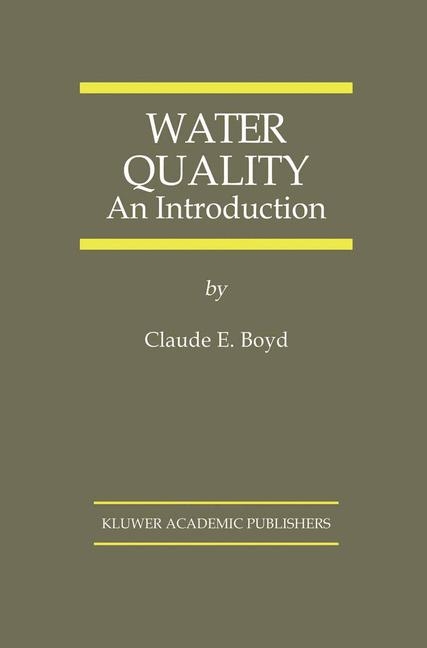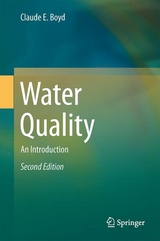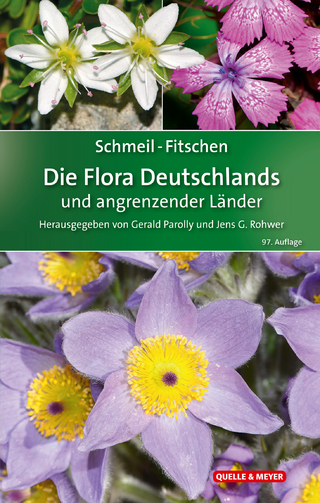
Water Quality
An Introduction
Seiten
2012
|
Softcover reprint of the original 1st ed. 2000
Springer-Verlag New York Inc.
978-1-4613-7021-5 (ISBN)
Springer-Verlag New York Inc.
978-1-4613-7021-5 (ISBN)
- Titel erscheint in neuer Auflage
- Artikel merken
Zu diesem Artikel existiert eine Nachauflage
Water quality is important to everyone, but professionals in many disciplines need an understanding of this subject. Although water quality is complex, its general aspects can be grasped readily and with little background - only introductory chemistry and biology and a little algebra are needed. Unfortunately, the teaching of water quality is not well organized. In most colleges and universities, water quality instruction is given in certain engineering curricula and in aquatic ecology or fisheries curricula. There also is brief attention to selected topics on water quality in numerous classes in other curricula. Water quality training in engineering is highly specialized and directed by necessity towards water supply and water treatment, while the focus in aquatic ecology and fisheries is on biological water quality and pollution. Few students venture into specialized classes outside of their curricula, and as a result, their formal training in water quality is greatly restricted. Self-education by reading texts and reference books on water quality is difficult.
Authors of water quality books seem to be more interested in presenting a rigorous, detailed treatment than in focusing on simplicity and clarity. Chemical aspects of water quality often are presented at a level requiring fairly advanced mathematics and physical chemistry, and biological discussions may be quite advanced and theoretical. I have taught water quality to seniors and graduate students in agriculture, wildlife and fisheries, environmental sciences, economics, and similar disciplines for many years.
Authors of water quality books seem to be more interested in presenting a rigorous, detailed treatment than in focusing on simplicity and clarity. Chemical aspects of water quality often are presented at a level requiring fairly advanced mathematics and physical chemistry, and biological discussions may be quite advanced and theoretical. I have taught water quality to seniors and graduate students in agriculture, wildlife and fisheries, environmental sciences, economics, and similar disciplines for many years.
Preface. Introduction. 1. Physical Properties of Water. 2. Hydrology. 3. Dissolved Solids. 4. Dissolved Oxygen and Redox Potential. 5. Particulate Matter, Turbidity, and Color. 6. pH, Carbon Dioxide, and Alkalinity. 7. Total Hardness. 8. Bacteria, Phytoplankton, and Water Quality. 9. Oxygen Production and Demand. 10. Nitrogen. 11. Phosphorus. 12. Sulfur. 13. Micronutrients and Other Trace Elements. 14. Water Pollution. 15. Water Quality Regulations. References. Appendix. Index.
| Zusatzinfo | biography |
|---|---|
| Verlagsort | New York, NY |
| Sprache | englisch |
| Maße | 156 x 234 mm |
| Gewicht | 528 g |
| Themenwelt | Sachbuch/Ratgeber ► Natur / Technik ► Naturführer |
| Naturwissenschaften ► Biologie ► Ökologie / Naturschutz | |
| Naturwissenschaften ► Chemie ► Physikalische Chemie | |
| Naturwissenschaften ► Geowissenschaften ► Geologie | |
| Naturwissenschaften ► Geowissenschaften ► Hydrologie / Ozeanografie | |
| Technik ► Umwelttechnik / Biotechnologie | |
| Weitere Fachgebiete ► Land- / Forstwirtschaft / Fischerei | |
| ISBN-10 | 1-4613-7021-3 / 1461370213 |
| ISBN-13 | 978-1-4613-7021-5 / 9781461370215 |
| Zustand | Neuware |
| Haben Sie eine Frage zum Produkt? |
Mehr entdecken
aus dem Bereich
aus dem Bereich
Buch | Hardcover (2019)
Quelle & Meyer (Verlag)
39,95 €



